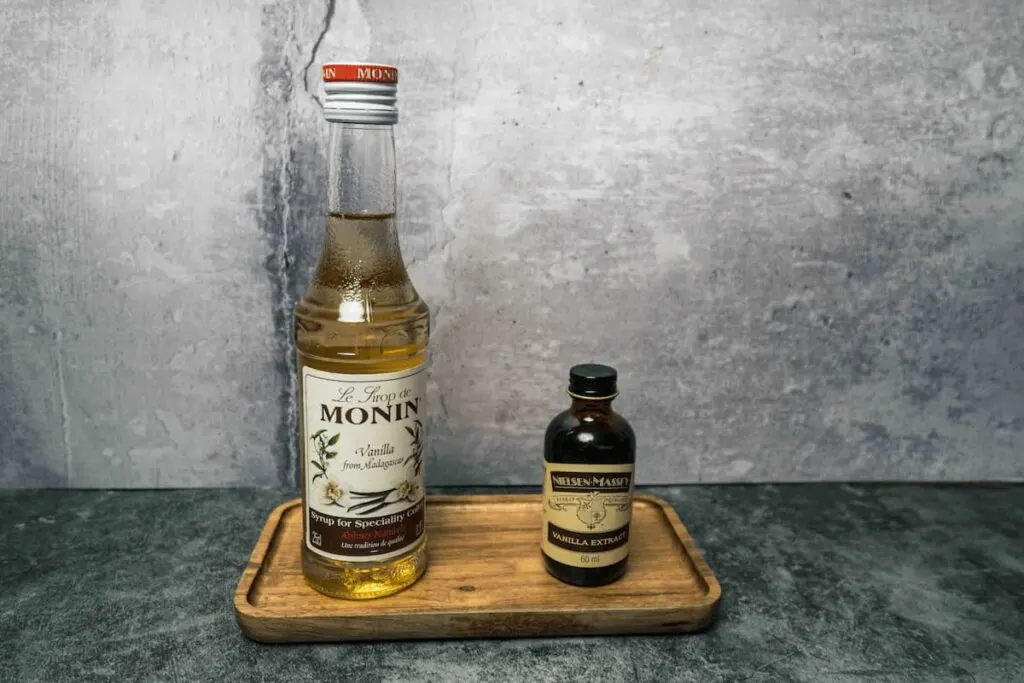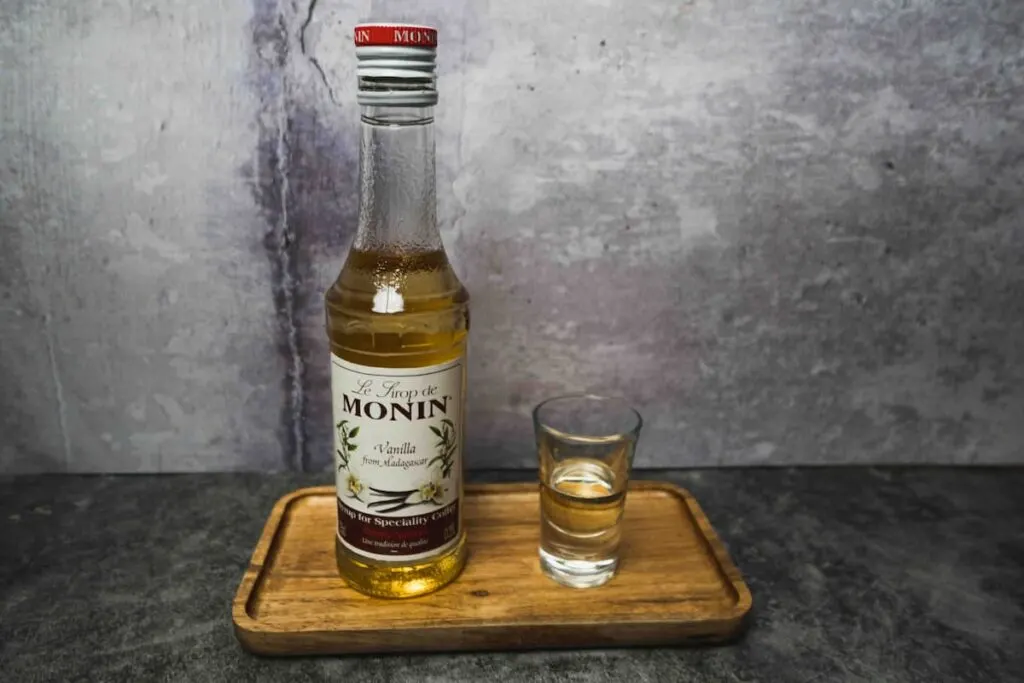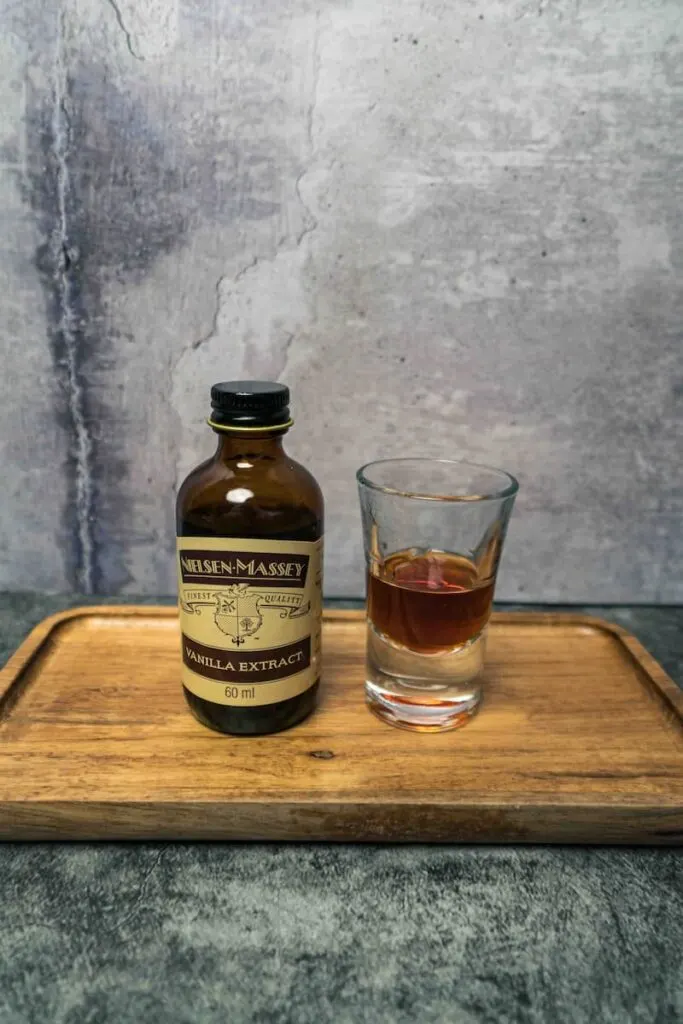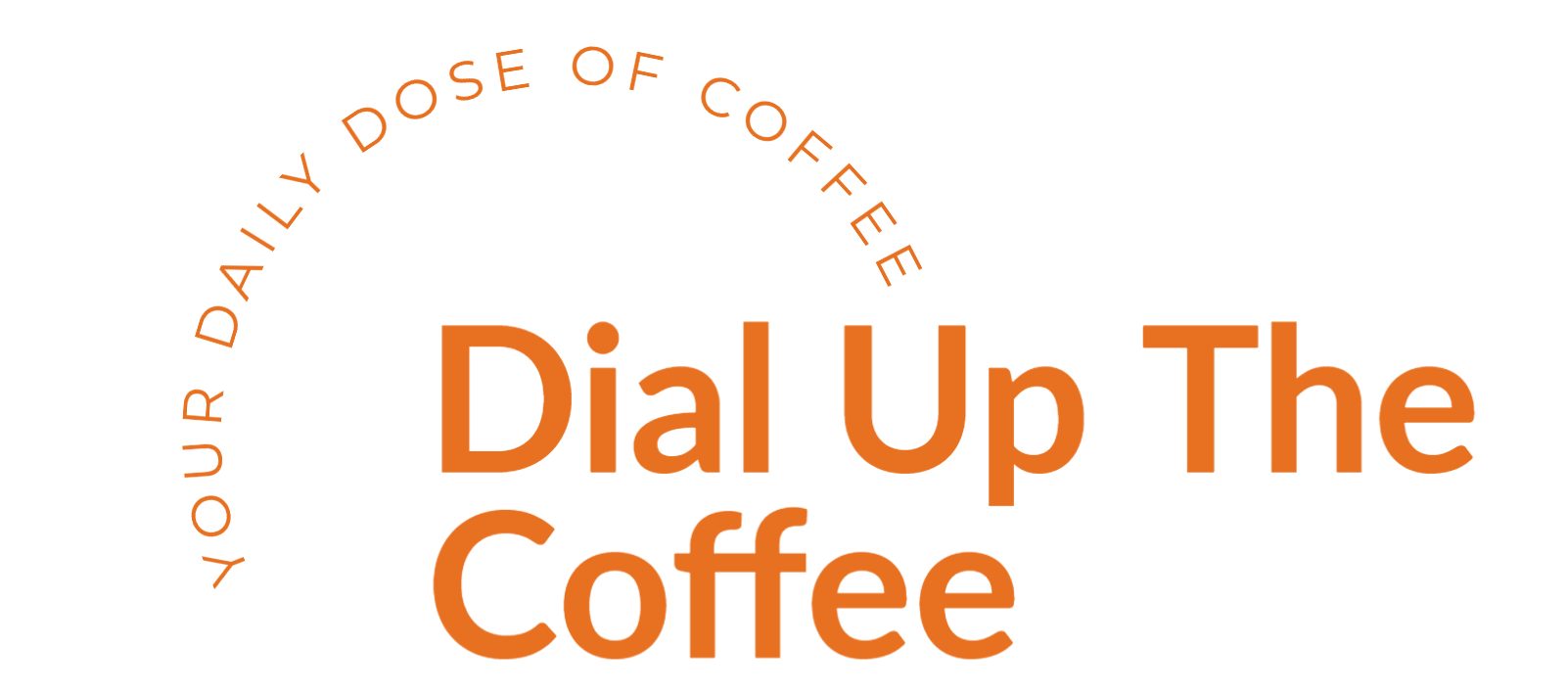Vanilla is one of the most versatile ingredients globally; used in many beverages and dishes, whatever you add it to receives extra flavor and deliciousness. When choosing between using vanilla syrup or vanilla extract, it is best to know how these two forms of vanilla differ to understand when and how to use them. So what’s the difference between vanilla syrup vs. vanilla extract?
Vanilla syrup is sweet and made from granulated sugar, water, and vanilla extract. This process takes less than a day. Vanilla extract is produced by steeping cured vanilla pods in a mixture of water and alcohol to create a somewhat bitter solution. This process takes several months.
Knowing what makes vanilla syrup and vanilla extract is just the beginning. To fully comprehend how these two forms of vanilla differ, you need to take a deeper look at each of them, their manufacturing processes, final products’ consistency, tastes, and how you can best consume them.
Disclaimer: Hi! this post may contain affiliate links which will take you to online retailers that sell products and services. If you click on one and buy something, I may earn a commission, see my Affiliate Disclosure for more details.

Vanilla Syrup Vs. Vanilla Essence: What’s The Difference?
Vanilla syrup, which you make from adding water, sugar, and vanilla extract, is a sweet, thick liquid and typically comes in large bottles with an easy-to-use pump dispenser. This form of vanilla is not suitable for baking. You can use it to sweeten beverages and desserts, adding that extra touch of vanilla to your cocktails, smoothies, and coffee drinks.
On the other hand, Vanilla extract is made through steeping chopped up or ground vanilla pods or beans in an alcohol and water solution, producing a brown, thin liquid. To be labeled “pure,” the vanilla extract solution must contain at least 35% alcohol and 13.35% vanilla bean solids. This form of vanilla is the preferred type that most people use in their baking and cooking.

To make the vanilla syrup, you need to have your vanilla extract already, as it is one of its three main ingredients. Vanilla extract does not require vanilla syrup for its production. Instead, it involves vanilla beans and alcohol in its production. You can make vanilla syrup in less than a day, whereas vanilla extract takes several months to produce.
Vanilla extract is more versatile than vanilla syrup, as you can use it in baking, cooking, and beverages. Vanilla syrup is mostly only used in beverages and is an additive for deserts.
The vanilla syrup has a sweet sugary taste as it uses quite a large amount of sugar in its production. You can also consume vanilla syrup on its own if you have a sweet tooth or on top of things such as ice cream or other desserts. On the other hand, vanilla extract has a slightly bitter taste, and if you consumed it on its own, it would probably have an unpleasant taste due to its high levels of alcohol.
Vanilla Syrup Vs. Vanilla Essence: How Do You Make It?
You can make vanilla syrup and extract at home by following relatively easy recipes. Although, each one undergoes a different manufacturing process.

How Do You Make Vanilla Syrup?
Making vanilla syrup is almost as easy as one, two, three. All you need is one cup of water, one cup of sugar, and one teaspoon of vanilla essence.
- Bring the water to the boil
- Add the sugar, stirring while it dissolves
- Take the mixture off the heat
- Once it is off the heat, add the vanilla essence
That’s all it takes to make your sweet vanilla syrup.
How Do You Make Vanilla Extract?

Contrastingly, vanilla extract is a much more intricate process. It requires the use of 4 ounces (226.7 grams) of cured vanilla pods and 25.3 ounces (750 ml) of alcohol that needs to be around 40% proof, and the following recipe does not use water.
- Cut the beans in half
- Fill a sealable container with the alcohol
- Place the roughly chopped vanilla pods into the container with the alcohol
- Making sure the container is sealed tight, place it into a cool, dark area
- Shake the bottle daily or a few times a week
After one week, the extract will be strong enough to use, but you should keep the pods steeping for at least a month for the best results. Vanilla extracts steeped for 6 – 12 months yield the best results.
You can leave the beans inside the liquid if you wish, or you can remove them. If you prefer to leave them in the extract, make sure they are permanently submerged, preventing them from going rancid.
Where Does Vanilla Come From?
The fantastic vanilla flavor that we all know and love comes from the dried seed pods of the vanilla orchid. There are several kinds of vanilla orchids grown in different regions, with each area and its orchid producing a vanilla bean with its unique characteristics.
Getting to a point where you can harvest a vanilla bean pod is a labor-intensive, delicate process. The flowers need to be hand-pollinated to produce green, long bean pods. These pods then take several months to mature, and once developed, they have to be dried, which takes even longer.
Eventually, the production process comes to an end, and your final product is a dried dark-brown pod, and this is what everyone will recognize as your vanilla bean.
There are four commonly used vanilla orchids used to produce the different vanilla products:
- Madagascar Vanilla Beans – native to Madagascar, these beans are the most popular and have a creamy, strong flavor
- Mexican Vanilla Beans – native to Mexico these beans are considered some of the best in the world with their smoky, smooth vanilla flavoring, with its hint of spice
- Tahitian Vanilla Beans – native to Tahiti, these beans are known for their unique florally flavor, with hints of licorice and cherry; they are also twice the size of the other vanilla beans and are also one of the most expensive vanilla types
- Ugandan Vanilla Beans – native to Uganda, these beans contain high percentages of natural vanillin, giving them a bold aroma and flavor
Conclusion
Vanilla syrup and vanilla extract are two very different forms of vanilla. The syrup is a sweet additive best used in beverages and desserts, while the extract is a bitter solution best used in baking, cooking, and beverages. The syrup requires the extract for its manufacture, while the extract requires vanilla beans and alcohol.
